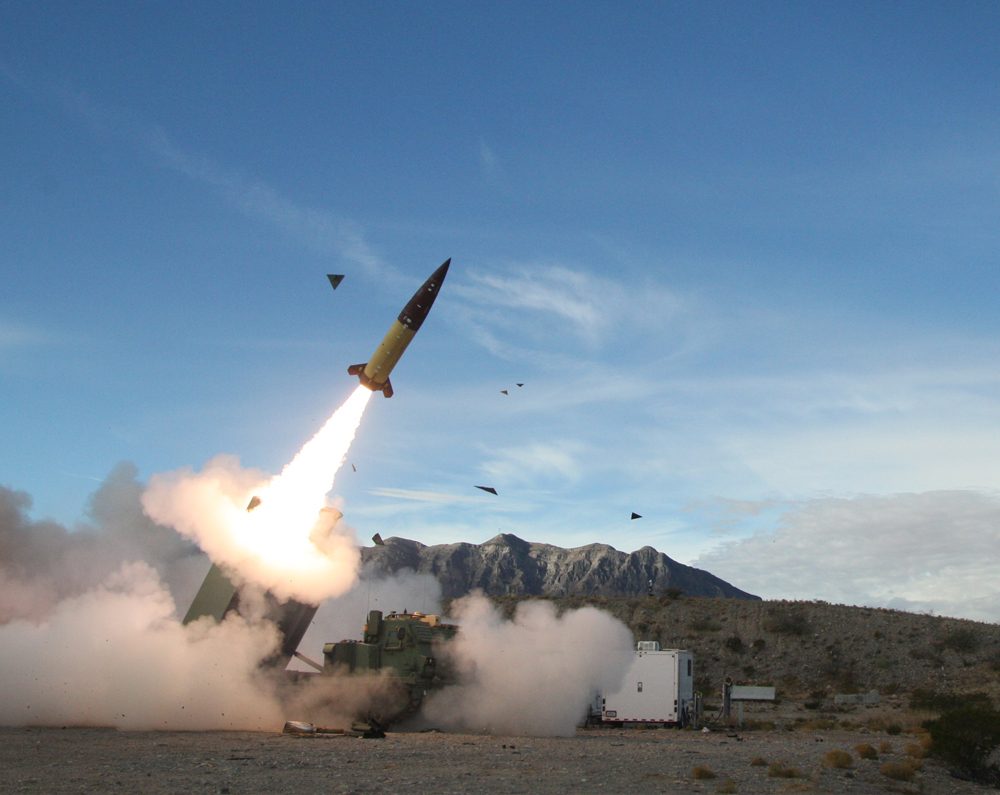Last night, US President Joe Biden authorised Ukraine to use American ATACMS – or Army Tactical Missile Systems – against targets in the Russian region of Kursk. This decision came approximately six months after ATACMS were first deployed in Ukraine. Before now, they have been limited to targets in Russian-occupied Ukrainian territory.
The decision from Biden appears to be a direct response to Russia amassing a large number of troops in Kursk, which Ukraine has held since August this year. Reports suggest that up to 50,000 Russian troops are currently preparing for a large-scale counteroffensive to take back the region, using 10,000 to 12,000 North Korean troops sent by Kim Jong-un.
The key factor will be the number of missiles Ukraine receives in the coming weeks
US officials have stated that the purpose of permitting ATACMS strikes inside Russia is to help Ukraine hold its position in Kursk for as long as possible. Officials have also reportedly clarified that they expect ATACMS to be focused primarily on targets in and around Kursk. Ukraine is likely only allowed to strike directly military-related targets and not industrial and economic sites.
In terms of timing, Biden has likely been influenced by the US election results. President-elect Donald Trump has repeatedly expressed his intention to end the war in Ukraine swiftly and proposed freezing the conflict along the current lines of control. This plan would be considerably more challenging to implement if Ukraine still holds part of Russia’s territory.
The military implications of this decision remain to be seen. There are multiple types of ATACMS. In the past, Ukraine has received M39 and M39A1 ATACMS from the US. These variants are equipped with cluster munition warheads – which scatter multiple bombs over a large area.
The older M39 variant has a range of 165 km, while the modernized M39A1 variant reaches 300 km, though this increased range comes at the expense of a reduced payload. Both ATACMS types could be used in the Kursk region to neutralise exposed troops and armor, as well as air defence batteries or training camps.
Other ATACMS use 500-pound warheads for destroying individual high-value targets. Ukraine is confirmed to have used these types of missiles, including in strikes against Russian ships docked around Crimea. It remains unclear whether Ukraine has received the most modern ATACMS variant, the M57, or the older M48. While both have the same warhead, the M57 is more accurate. Either way, both missile systems would allow Ukraine to threaten high-value targets in and around Kursk, including logistics depots and command centers.
The key factor that will decide how military effective the ATACMS will be is the number of missiles Ukraine receives in the coming weeks. While in general ATACMS have been fairly effective, reports suggest that Russia has been able to defend itself well against these attacks. This has forced Ukraine to use a substantial number of missiles per strike target, to ensure a guaranteed hit. This has drained Ukrainian stockpiles.
Still, an additional benefit of allowing strikes inside Russia is that it will force Russia to disperse its missile defense systems more evenly. This could weaken its missile defenses. Moreover, the effectiveness of ATACMS strikes inside Russia would be greatly enhanced if the UK and France follow America’s lead and allow Ukraine to use British Storm Shadow and French SCALP-EG cruise missiles.
ATACMS missiles approach their targets from high altitudes. The Storm Shadow cruise missiles, by contrast, skim along at low altitudes. Combined, these ballistic and cruise missiles become much harder to defend against – and therefore much more effective than if they were used alone.
Russia’s response to these developments remains uncertain. Putin has stated that strikes by western long-range weapons on targets inside Russia represent a red line and will have consequences. It cannot be entirely ruled out that Russia will react to these missile attacks in an escalatory way. But this is unlikely. Russia’s military and industrial capacity is highly strained. It cannot, at present, sustain a broader conflict with the West. Moreover, Putin’s red lines have been crossed repeatedly in the past without triggering a drastic response.
Russia’s most likely response will be to launch large-scale missile strikes against Ukrainian critical infrastructure and civilian targets, as it has done in the past. While such strikes would cause further suffering for the Ukrainian population and underline Moscow’s willingness to terrorise civilians to achieve its military goals, it would not change the nature of the conflict.
As for Ukraine, being able to use ATACMS on Russian territory is not a silver bullet that will single-handedly turn the war in its favor. But it will enable Ukraine to conduct a more effective campaign in the coming months.








Comments